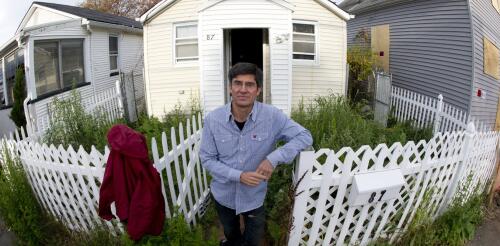Community
It was midday on a Saturday, and Simonetta led me from the open front door of her home in southeast Chicago to her sitting room and settled next to her husband, Christopher, on the couch. In the 1980s, Christopher had worked a few blocks away at U.S. Steel South Works, earning three times the minimum wage with a high school diploma – more than enough to buy a house near Simonetta’s parents before their first baby arrived. Like their neighbors in southeast Chicago, Simonetta and Christopher’s expectations for work and home were set by the steel industry. Between 1875 and 1990, the employment offered here by eight steel mills created a dense network of working-class neighborhoods on the marshlands 15 miles south of downtown Chicago. For the tens of thousands of employees who lived and worked in this region, steel was a rare breed of work: unionized, blue-collar jobs that paid middle-class wages, with starting salaries in the 1960s at nearly three times the minim...
A salve for America’s loneliness epidemic could exist right in front of its homes. Front yards are a staple of many American neighborhoods. Lush plantings, porches or trinkets can capture the attention of passersby and spark conversation. Other lawns say “stay away,” whether it’s through imposing fences or foreboding signs. But to what extent do yards serve as a window into the people who tend them – and how they feel about their home, neighborhood and city? In our study of nearly 1,000 front yards in Buffalo’s Elmwood Village neighborhood, we found that the livelier and more open the front yard, the more content and connected the resident. Cultivating a sense of place Our study of front yards is part of a larger investigation into the ways in which American neighborhoods can cultivate a stronger “sense of place,” which refers to the feeling of attachment and belonging one feels to their home, neighborhood and city. For deca...
After Hurricane Ida hit New Orleans in 2021, Kirt Talamo, a fourth-generation Louisianan, decided it was time to go. He sold his flooded home, purchased his grandmother’s former house on New Orleans’ west bank, which hadn’t flooded, and moved in. It felt good to be back within its familiar walls, but his mind was on the future. “My other house wasn’t supposed to flood, and now insurance costs are going through the roof; it’s bad,” he told us. “I wanted to keep my grandma’s place in the family, but I don’t know how much longer I can stay. I’d love to, but it’s unsustainable.” When hurricanes and other disaster strike, they often trigger presidential disaster declarations, opening the way for large sums of taxpayer money to flow to affected communities. Some of that money will go immediately to help people in need. Some will go to rebuild public infrastructure, like roads and levees. And some of it will...
Curious Kids is a series for children of all ages. If you have a question you’d like an expert to answer, send it to curiouskidsus@theconversation.com. What makes someone Indigenous? – Artie, age 9, Astoria, New York “In 1492, Columbus sailed the ocean blue.” You may have heard that in school. The rhyme makes it easier to remember that 1492 was the year when an Italian explorer named Christopher Columbus set sail from Spain and landed in a chain of islands near modern-day Florida called the “West Indies.” Europeans called the enormous land mass that we now know as North and South America the “New World” because, before the very late 15th century, nobody on the east side of the Atlantic Ocean even knew it existed. A few Viking explorers had reached the Americas hundreds of years earlier, but little is known about their visits. From Europeans&...



